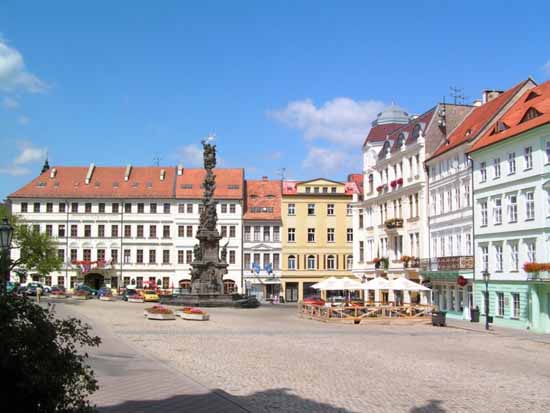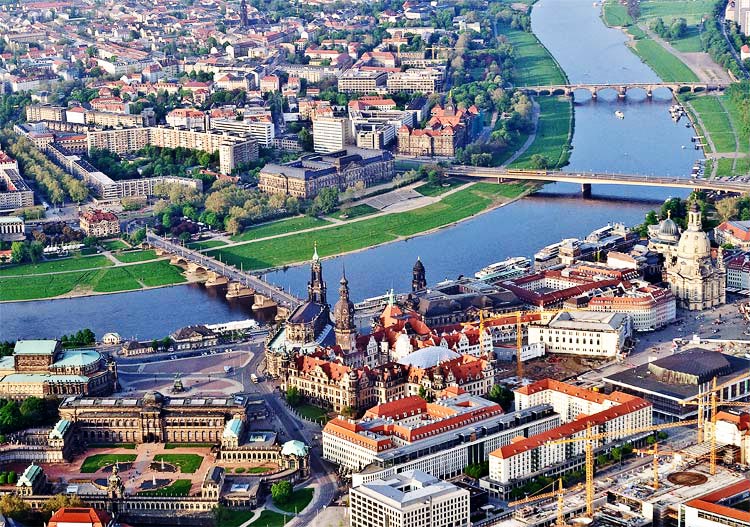It is, but I've seen shorter in both flatter stages (Quatre Jours de Dunkerque springs to mind) and hillier ones (Settimana Coppi e Bartali springs to mind). With pretty much no obstacles before the circuit, I think it'll be fine.
Now, a big, big stage for the race.
Stage 9: Praha - Glauchau, 239km
Climbs:
Treskovice (cat.2) 2,1km @ 5,6%
Keilbergpass/Klinovecké Sedlo (cat.1) 10,1km @ 5,7%
Hoher Hahn (cat.2) 2,7km @ 7,1%
Teufelstein (cat.1) 3,0km @ 10,7%
Alexanderstein (cat.2) 3,9km @ 3,8%
Promnitzer Berg (cat.2) 1,1km @ 6,2%
Steile Wand von Meerane (1er Passage)(cat.2) 0,5km @ 8,3%
Steile Wand von Meerane (2er Passage)(cat.2) 0,5km @ 8,3%
The first day back after the rest day is also by far the longest stage of the Peace Race, and potentially the longest stage ever included in the event. It also marks our first visit to the former DDR, with the border being crossed shortly after halfway through the stage. You may have noticed a few similarities in profile between this and the Frankfurt Maitagrennen, which attentive forumites will know is a race I like a lot.
This is also a stage that pays tribute to a lot of the traditions of the Friedensfahrt, including some of its classic spots. Nevertheless, the riders leave Prague on a long sojourn over a long stretch of comparatively unthreatening rolling terrain through Bohemian countryside, with only a small categorised climb up to the village of Treskovice to mark it. That isn't to say that things will be flat, however; there are quite a few of those frustrating little up-and-down digs that are of little real concern in and of themselves, but in a 240km stage with numerous obstacles to come, cumulative damage could factor into things.
After 120km the riders pass through the cobbled market streets of
Ostrov, which will likely host an intermediate sprint too. This is where the stage starts to get serious. High above Ostrov lie the Erzgebirge mountains, known to the Czechs as the Krušné Hory. The highest peaks in this range are the 1244m high Klínovec (Keilberg), which hosts
an old hotel and broadcasting tower, and at 1214m, the German peak of the range,
Fichtelberg. The latter has been used in the Deutschlandtour and the Sachsentour as a mountaintop finish, though typically from the German side. We are climbing to the pass in between these, however, above the ski resort of
Boží Dar. The roads here are pretty good, and most of the climb is manageable, although there are some steep sections, as you can tell from the first 10km of
this profile. Still, with over 100km to go, there shouldn't be too many fireworks.
The summit here marks the border crossing from the Czech Republic into Germany, and thus we descend through German border towns for 20km before the short and sharp rise of the
Hoher Hahn climb near Schwarzenberg. The next climb is the real pain though. This is the Mammolshain of my Peace Race Maitagrennen. Located just outside the town of
Aue, the
Teufelstein is
steep,
punishing and
relentless. It is also a Peace Race classic, that has been climbed many times in the race, most notably in 1964 and 1968 when stages finished at its base in Aue. This is probably because of its difficulty; strong gradients are the stock in trade, as you can see from
this profile - those darkest parts are 18%, so this could well do some damage that needs limiting, what with 70km still remaining. Especially with the next climb starting almost straight away after the descent into Aue - although the shallow gradients shouldn't worry anybody, it could disrupt those trying to chase back on. The next obstacle is a short climb, up to
Promnitzer Berg,
overlooking the Autobahn and the hills. It isn't long, but by this point, legs are starting to hurt for sure, with nearly 200km in the legs. Shortly after the descent we pass through our finishing town for the day, Glauchau, and cross the line for the first time. There are 27km remaining.
These take the form of two laps linking Glauchau with the most famous small town in the Peace Race. That's right - Meerane. Although the town never hosted a stage finale until the very last Course de la Paix in 2006, the town's most famous feature, a
350m cobbled monstrosity of a street known as
An der Steile Wand. First featuring in the race in the first Friedensfahrt to visit the DDR, back in 1952, the Wand quickly rose in prominence to become
the icon of the
race, bringing insane crowds to watch
the riders struggle by, hanging from windows, sat on rooftops, by the roadside... die Steile Wand was perhaps the nearest thing we'll ever get to an Ostbloc Muur van Geraardsbergen. Or perhaps the Koppenberg might be more appropriate; Steile Wand was seldom race-deciding, but always absolutely packed with fans.
Watch the 1960 race pass over the iconic cobbles here. The main body of the climb is about 350m at 12%, peaking at 22%, but some shallow ascent on tarmac can be appended onto the end of that.
Of course, twice through Meerane means double the pleasure and double the fun, and with the second passage coming 7km from the line, with another minor ascent on the circuit and a technical run-in including some
easy town centre cobbles in Glauchau, there are options for almost every type of result in this stage, and opportunities for almost every type of rider. With 239km in the saddle, this one should be really interesting, and could yield anything from a breakaway stage, a day for the more durable sprinters, to minutes and minutes being won and lost on the GC.
Steile Wand von Meerane:
Glauchau:












































